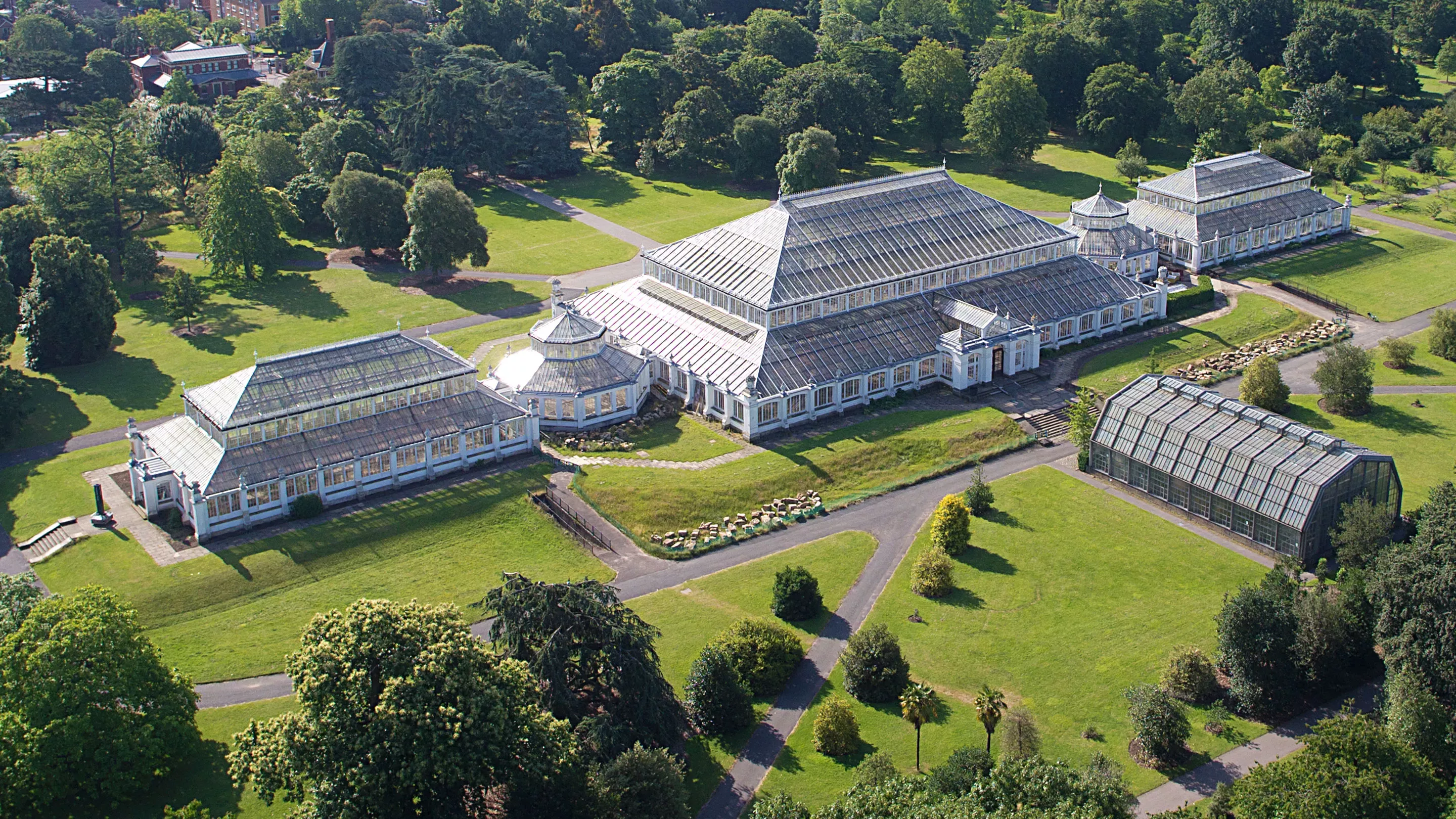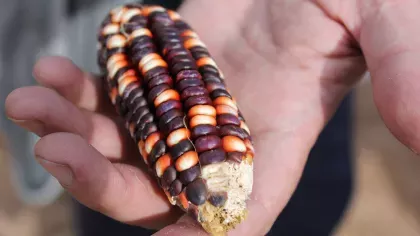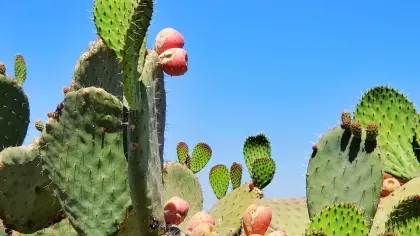13 October 2022
The scientific secrets behind México Mágico
Learn more about the inspiration behind our magical 3D audio sculpture at Mexico this autumn.

Visit Mexico this autumn to discover the brand-new México Mágico installation for a limited time only.
The installation México Mágico by Augustine Leudar creates surreal soundscapes from different Mexican forest habitats to immerse visitors in a unique, ethereal auditory experience.
It uses a realistic 3D audio recreation of these ecosystems, imaginary elements synthesized from field recordings, pitched down ultrasonic sounds such as bat calls, and cultural elements all from the conservation region.
Mexico is the fourth most biodiverse country in the world, with around 26,000 native plant species, of which around 40% are found nowhere else.
Along with its incredible plant diversity, Mexico is also home to a rich variety of cultures, with 62 distinct ethnic groups speaking hundreds of languages.
That's a lot to cover in a soundscape, right?
Discover the magic yourself at Mexico this autumn.

Birdsong
México Mágico immerses the visitor in a sea of sounds from the enchanted Mexican forests. But what exactly is behind these sounds?
You might hear the song of various birds called grackles, such as the great-tailed grackle (Quiscalus mexicanus). Also known as 'zanate mexicano', their iridescent feathers were used by Aztecs for decoration.
Grackles can imitate sounds — according to Mexican mythology, they have 'stolen' seven songs from other animals, as they were mute at the beginning of the Creation.
You might also hear the Montezuma oropendola (Psarocolius montezuma), also known as 'cacique de Moctezuma'. Another interesting inhabitant of Mexican forests, it has a loud and unique call.


Monkey business
Other animals you might hear include the Mexican howler monkey (Alouatta palliata mexicana), which is found across Southern Mexico. They make very loud calls, described as being roars, barks and screeches.
As keen fruit eaters, howler monkeys disperse the seeds of many species of plants, helping to maintain the health of these ecosystems. This includes Brosimum alicastrum, also known as 'breadnut' or 'ramón'.
This was a staple food for Ancient Mayas, and today is considered a ‘famine food’, as it is highly nutritious, inexpensive, and readily available for local communities. The fruits and seeds are eaten, as well as the sap being used for its medicinal properties.
The Classic Mayas considered howler monkeys sacred, and revered the Howler Monkey God as a deity of arts and crafts.


Hanging around
If you listen carefully, a bat call can be heard in México Mágico.
There are a wide variety of bat species in Mexican forests. Many species, like Artibeus bats, eat fruit and spread the seeds around the forests, including sapodilla (Manilkara zapota) fruit.
Sapodilla was used by Ancient Aztec and Maya civilizations for both its edible fruits and its sap, a milky latex known as 'chicle'.
The sap was dried to obtain a rubbery substance that was chewed to keep teeth clean, and to inhibit hunger during ritual fasting.
Like most bats, Artibeus species are nocturnal, and use trees, caves, and even folded leaves (so-called ‘tents’) as roosting sites.
Normally, bat calls are too high a frequency for humans to hear, so for México Mágico, the call was made audible by pitching down its frequency.


México Mágico’s forest habitats
In Mexican pre-Columbian mythology, forests and trees were very powerful symbols.
Four trees of life, or Yaxchés, were believed to hold the sky at each corner of the Earth, and a fifth one connected the three cosmic levels of the Underworld, the Earth, and the Sky.

The sounds of the México Mágico installation were mostly recorded in the South of Mexico, in cloud forests, rainforests, temperate forests, and mangrove swamps.
Each one of these plays a key role in the ecosystem of the country, contributing to its incredible biodiversity.
Many of the plants growing in Mexican cloud forests are found nowhere else in the world. The rainforests hold a considerable amount of the country’s biodiversity on their own. Temperate forests are home to a huge variety of pine trees, with 50% of the world's pine species being found in Mexico.
The benefit even reaches beyond the land, with mangrove forests not only helping provide a defense against flooding, but also providing habitats for marine life.


The magic behind the forests
A key message of the installation is that without forests, life cannot be preserved.
According to pre-Columbian beliefs, in every forest there were different guardians, called 'amoxoaques', responsible for preserving the forest and safeguarding the trees.
Many tree species were considered sacred by Ancient Mayas and other Mexican communities in the pre-Hispanic era, often due to their potent medicinal properties.
Other interesting characters in the Ancient Mayan tradition were the 'aluxes' and 'chaneques', spirits of the woods inhabiting mountains, caves, and springs that safeguard the natural world.
These guardians still exist today, although not supernatural creatures: with their knowledge and commitment to protect natural environments, indigenous people across Southern Mexico work constantly to protect these critical ecosystems.

México Mágico is connected to Kew’s research programme led by scientists Dr Tiziana Ulian and Michael Way in collaboration with the Universidad Nacional Autónoma de México (UNAM) and NGO Pronatura Veracruz aiming to protect, conserve and enhance Mexican forests' natural capital. It focuses on preserving native tree seeds and supporting the livelihoods of local communities and it is supported by the Garfield Weston Foundation and the Aldama Foundation.
Augustine Leudar spent four months recording isolated and complex layers of sound at various heights and points across forest ecosystems in Mexico, mainly cloud forests, rainforests, seasonally dry tropical forests, temperate forests, and mangrove swamps.





